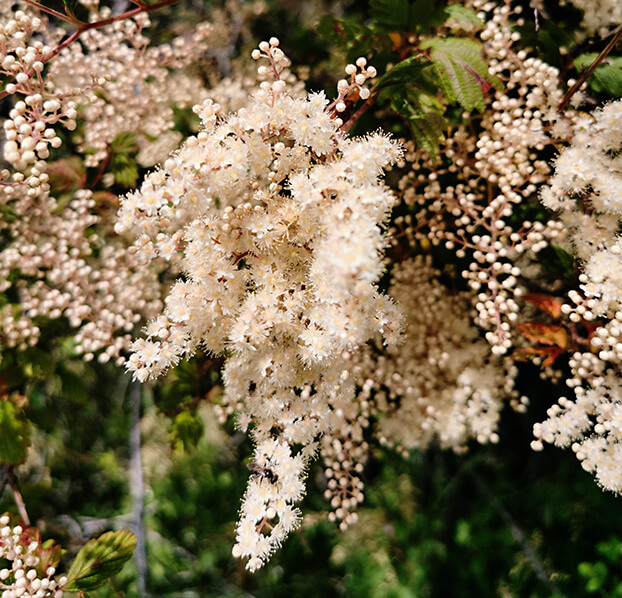
Species Information
Oceanspray

| Status |
Least Concern: species that have a widespread and abundant population and are not currently threatened. |
| Family |
Rosaceae |
| Description | Two-colored with creamy-white flower clusters |
| Habitat | Pacific Northwest |
| Reproduction | Flowers are pollinated by insects to create fruit |
| Range | California to Washington |
Oceanspray (Holodiscus discolor) is a beautiful deciduous shrub that is native to the Pacific Northwest. It is a relatively tall shrub that can grow between 4 to 10 feet in height and has arching branches is among the first shrubs to initiate leaves in spring. The plant is spectacular in bloom and is known for its clusters of small, white to creamy flowers that resemble foamy Oceanspray, hence its common name. The flowers typically bloom from late spring to early summer and are attractive to pollinators such as bees and butterflies.
The shrub has alternate, lobed leaves that are green in color and turn yellow or reddish in the fall. After flowering, Oceanspray produces small, dry fruits that are held in clusters. The fruit is often dispersed by the wind but can also be dispersed by animals that eat it.
Oceanspray is adaptable and can grow in a variety of habitats, including woodlands, meadows, along stream banks. It is known for its ornamental value in gardens and landscapes, but it is also essential for providing habitat and food for native wildlife. While the plant has little food value for wildlife, it provides excellent cover for birds, small mammals, and amphibians such as the Pacific Treefrog.
In Native American traditional medicine, Oceanspray has been used for various purposes, including as a treatment for colds and sore throats. The plant has been used in the treatment of smallpox, black measles and chicken pox. The inner bark can be made into an eyewash. Many tribes used the wood for bark, harpoons and nails.
